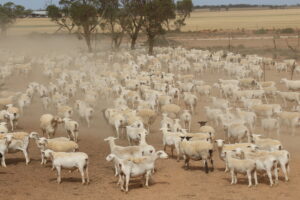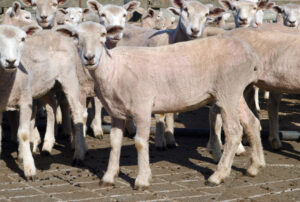Talk to any farmer or local agent, and they will tell you that local supply has an impact on local prices. Many a grower will hear the yarding is going to be big and worry about prices falling, or vice versa. Does a strong price move encourage more lambs into the yards? Here we crunch the Wagga numbers.
On the
surface, it does make sense that more lambs in a particular saleyard will mean
lower prices. However, the lamb market
is a complicated beast, with supply & export, domestic & restocker
demand, all having an impact on prices.
Figure 1
shows Wagga’s average trade lamb prices, along with yardings for the last 20
years. In terms of relationships, it
tells us little. It is interesting to
note the increase in yardings in the last few years. This is presumably in line with growth in
meat sheep in the Wagga area, and possibly some shift away from direct selling
due to the strong price of recent years.
To assess
the relationship between supply and price on a weekly basis we produced the
scatter chart in Figure 2. This shows
the weekly change in price, versus the weekly change in yardings. There is a weak positive relationship between
that change in yardings and the change in price.
This is
counter-intuitive in that you would think larger yardings would equate to lower
prices. If we lag yardings by one week, the positive relationship gets stronger. This suggests that stronger price will see
more lambs hit the yards, and vice versa.
The relationship is still very weak however, and could simply be due to
the general rising price trend over the last 20 years.
With Wagga
being a Thursday sale, an argument could be made that yardings will be impacted
by prices at other yards earlier in the week.
A weaker trend for the week might be met with lower yardings at Wagga.
What does it mean?
There is plenty of price data to delve into the Meat and Livestock Australia (MLA) website, but this broad analysis somewhat debunks the theory that local changes supply will impact prices on the day. Other supply and demand factors appear to be having a stronger influence on price than local supplies.
Have any questions or comments?
Key Points
- When local supplies change, there is the expectation that prices will move with them.
- The supply and price data from Wagga shows a weak positive relationship between supply and price.
- Broader supply and demand factors appear to have a stronger influence on Wagga prices.
Click on figure to expand
Click on figure to expand
Click on figure to expand
Data sources: MLA, Mecardo















